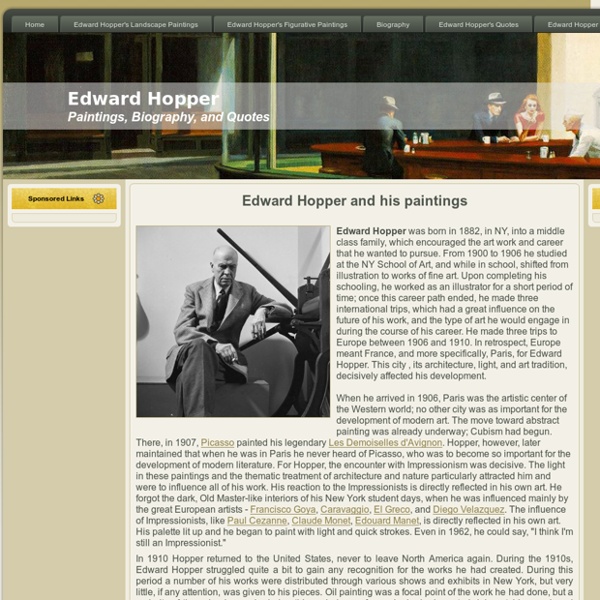



Peintures 8-bits par Adam Lister L’artiste américain Adam Lister réalise une série de peintures à l’aquarelle nommée 8-Bit Painting. Comme son nom l’indique, il peint des univers de la pop cutlure, Stars Wars, Breaking Bad, les Simpsons mais aussi ré-interprète des chefs d’oeuvre de la peinture de Magritte, Vermeer… Tout cela sous la forme d’un dessin sorti de nos vieilles consoles des années 90. Pour en savoir plus sur Adam Lister, cliquez ici. Pin It Pin It Pin It Pin It Pin It Pin It Pin It Pin It Pin It Pin It Pin It Pin It Pin It Pin It Pin It Pin It Pin It Pin It Pin It Pin It Pin It
Charles Hardaker artist, paintings and art at the Red Rag British Art Gallery Charles Hardaker is an artist of International standing. He trained in the West Midlands at Birmingham College of Art and Crafts and the Royal College of Art. Charles Hardaker is a member of the New English Art Club (1969) and the Royal Society of British Artists Charles Hardaker contemporary paintings are in many important art collections. These include: the permanent collections of The Tate Art Gallery; the Guildhall of London, the GLC; the Institute of Civil Engineers; The National Library of Wales; and numerous private British art collections and overseas including USA, Canada, Japan and Greece. Charles Hardaker contemporary paintings typically feature landscapes, still life, portraits and philosophical/ scriptural subjects. Charles Hardaker has had several solo art exhibitions to date in the USA and at British Art galleries and has been the recipient of many art awards. In addition to Red Rag British Art Gallery Charles Hardaker has exhibited at other leading British Art Galleries.
Johannes Vermeer - Kunstenaars - Ontdek de collectie Tegenwoordig is Johannes Vermeer een van de beroemdste Nederlandse schilders uit de 17de eeuw, maar eeuwenlang was hij nauwelijks van betekenis. Het kleine oeuvre dat nu van hem bekend is, werd lange tijd aan anderen toegeschreven. Pas in de jaren 70 van de 19de eeuw werd hij herontdekt. Sindsdien zijn 35 schilderijen als 'Vermeers' erkend. Johannes was de zoon van een zijdewerker en heeft altijd in Delft gewoond en gewerkt.
Kurt Wenner abandoned places – henk van rensbergen | henkvanrensbergen.com Johan De Wilde: tekeningen Artist's Physical Gestures Produce Beautiful Charcoal Drawings Using just her body and a piece of charcoal, New Orleans-based performance artist Heather Hansen bends and twists in fluid motions across the surface of paper to create beautifully rough symmetrical shapes and patterns. Her captivating performances involve dance-like movements that are just as much the main focus as the final, large-scale drawings. Watching her process is a mesmerizing experience where lines emerge from her many natural, physical gestures. Without hesitation, she repeats her movements and smears the lines together into the final, unpredictable works. She then lifts her body off of the page to reveal the one-of-a-kind pieces. Hansen quotes Joseph Campbell as part of her inspiration behind her work: "The goal of life is to make your heartbeat match the beat of the universe. Photo Credits: Spencer Hansen; David SeeligHeather Hansen's website
Andy Goldsworthy Digital Catalogue: Home De hoge vlucht van Peggy Wauters Peggy Wauters is eigenlijk een vrij onbekende kunstenares die in alle stilte en luwte een gigantisch en opmerkelijk oeuvre bij elkaar heeft geschilderd, zonder ooit echt naar buiten te treden. Kunstmecenas Alain Liedts: “Peggy Wauters krijgt deze kans om in Zebrastraat te exposeren wegens de verbluffende kwaliteit van haar werk. Alle taferelen van het leven, van wieg tot sterfbed, worden door haar getekend of geschilderd met humor en met pit. Naar aanleiding van deze retrospectieve tentoonstelling nam de Stichting Liedts-Meesen overigens ook het initiatief om het boek 'The Big Escape' te laten uitgeven bij MER. Zelf verklaart Peggy Wauters “dat ze de dingen sneller schildert dan ze zeggen kan”. Haar schilderijen bestaan niet alleen op zeer kleine formaten – soms niet groter dan 4,5x4,5cm – maar durven ook echt groot te gaan. Alles inspireert deze kunstenares: zowel een huwelijksaanzoek, een zeezicht of een vleesrijke maaltijd, alsook een wandeling in haar tuin, carnaval...